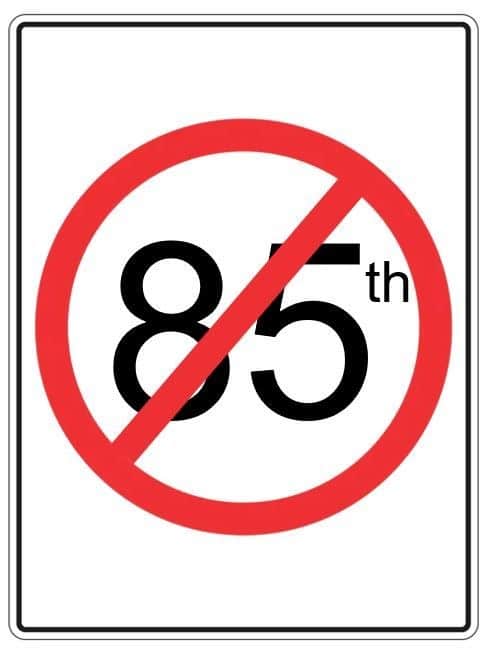
The 85th percentile method of setting speed limits is careless and antiquated.
One of the most archaic ways to set a speed limit is the 85th percentile speed (the speed at or below which 85% of motorists travel under free flow). This is 1950s thinking, yet it still seems to be used by some. Their arguments are:
1. The collective wisdom argument: that most drivers make good judgements about ‘safe’ driving speeds.
2. The speed dispersion argument: that speed limits near the 85th percentile will minimise the variance of the speed distribution.
3. The enforcement practicality argument: that 85th percentile limits represent a reasonable and realistic benchmark for enforcement.
All three arguments are flawed, and here’s why:
The collective wisdom argument:
Speeds selected by the majority of drivers are not safe in any absolute sense. There are grounds to doubt the argument that most drivers will consistently select speeds that represent a good balance between the advantages and disadvantages of different speeds:
• Drivers may not consider all the relevant costs and benefits when they make their speed choices. Also, considerations are likely to be biased towards personal benefit (e.g. reduced actual or perceived travel times) as opposed to collective risk (e.g. loss of amenity, overall crash risks).
• Drivers’ subjective assessments of risk, and the relationship between speed and risk, are likely to be inaccurate, for the following reasons; Although serious and fatal crashes happen every day, they are rare in the experience of individual drivers. The personal experience of most drivers convinces them that the speeds at which they usually drive are ‘safe’. Many people find the objective data on speed risks surprising and counter-intuitive.
The speed dispersion argument:
This is based on flawed research conducted in the 1960s. More recent and better designed case-control studies based on casualty crashes (Kloeden et al. 1997, 2001, 2002) did not find an inverted-U risk function. Instead the results show a rapid monotonic increase in risk as speed increases.
The enforcement practicality argument:
It is true that benefits from speed limit reductions may be limited if enforcement and public education efforts are minimal. It is also true that actual speed reductions have typically been less than the nominal reduction in speed limit. However, substantial benefits have been observed even when enforcement was not very rigorous and initial speed compliance was poor.
